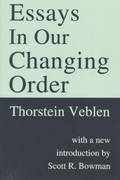This problem will require that your review the discussion of marginal revenue product (MRP) and profit maximization at pages 389-93 / 381-85 (not including the "A mathematical development" section).It will make you a Better Person.Part (a) is already done; be sure that you understand it before proceeding.
a)Compare equation N&S 10.6 (last dollar rule, also given above with different notation) to equations 11.45 and 11.46.Prove that equations 11.45 and 11.46 imply that the last dollar rule is satisfied when the firm has made the profit-maximizing input decisions.(This is actually very easy: just think about combining 11.45 and 11.46 into one condition.)
DONESimply divide the FOC for L by the FOC for K and your are left with the RTS = w/r condition.
b)Let's demonstrate the preceding point with an example.For w = $5, r =$15, a production function q = 4 L0.5+ 12 K0.5, and a constant price of $50 per unit of q, solve for L and K based on the MRP rules at 11.45 and 11.46, showing your work.(You should get 400 for each.)Then, using the values you found, demonstrate that the last dollar rule holds.Finally, show that q = 320, given the L and K that you found.
c)For an output q = 320 and the above production function, solve for L, K and the minimum expenditures using the production function and the RTS = w/r condition.(In other words, solve the constrained minimization problem.)
d)Suppose now that a firm has output q = 100 with the above production function, input prices, and output price.Calculate L and K (you might see a shortcut), and show that the firm is not complying with the MRP conditions.How should it change its behavior?
e)Equation 11.47 is satisfied for this production function; for example,
fLL= -L-1.5
\f11 .6.2 Input demand functions In principle, the rst-order conditions for hiring inputs in a prot-maximizing way can be manipulated to yield input demand functions that show how hiring depends on the prices that the rm faces. We will denote these demand functions by capital demand = k(P, v, w), (1149) labor demand = 1(P, v, w). Notice that, contrary to the input demand concepts discussed in Chapter 10, these demand functions are \"unconditional\"that is, they implicitly permit the rm to adjust its output to changing prices. Hence these demand functions provide a more complete picture of how prices affect input demand than did the contingent demand functions introduced in Chap- ter 10. We have already shown that these input demand functions can also be derived from the prot function through differentiation; in Example 11.5, we show that process explicitly. First, however, we will explore how changes in the price of an input might be expected to affect the demand for it. To simplify matters, we look only at labor demand, but the analy- sis of the demand for any other input would be the same. In general, we conclude that the direction of this effect is unambiguous in all casesthat is, Ell/aw S 0 no matter how many inputs there are. To develop some intuition for this result, we begin with some simple cases. 1 1 .6.3 Single-input case One reason for expecting Ell/aw to be negative is based on the presumption that the marginal physical product of labor decreases as the quantity of labor employed increases. A decrease in w means that more labor must be hired to bring about the equality w = P - MP;: A decrease in w must be met by a decrease in MP1 (because P is xed as required by the ceteris paribus assumption), and this can be brought about by increasing 1. That this argument is strictly cor- rect for the case of one input can be shown as follows. With one input, Equation 11.44 is the sole rst-order condition for prot maximization, rewritten here in a slightly different form: Pf; w = PU, w, P) = 0. (11.50) where F is just a shorthand we will use to refer to the left side of Equation 11.50. If w changes, the optimal value of I must adjust so that this condition continues to hold, which defines l as an implicit function of w. Applying the rule for finding the derivative of an implicit function in Chapter 2 (Equation 2.23 in particular) gives 1 1 .6.3 Single-input case One reason for expecting az/aw to be negative is based on the presumption that the marginal physical product of labor decreases as the quantity of labor employed increases. A decrease in w means that more labor must be hired to bring about the equality w = P - MP1: A decrease in w must be met by a decrease in MP, (because P is xed as required by the ceteris paribus assumption), and this can be brought about by increasing 1. That this argument is strictly cor- rect for the case of one input can be shown as follows. With one input, Equation 11.44 is the sole rst-order condition for prot maximization, rewritten here in a slightly different form: Pf, w = 13(2, w, P) = 0. (11.50) where F is just a shorthand we will use to refer to the left side of Equation 11.50. If w changes, the optimal value of I must adjust so that this condition continues to hold, which defines l as an implicit function of w. Applying the rule for finding the derivative of an implicit function in Chapter 2 (Equation 2.23 in particular) gives aF/aw = i s 0, (11.51) dw aF/az Pfu where the nal inequality holds because the marginal productivity of labor is assumed to be diminishing (t 5 0). Hence we have shown that, at least in the single-input case, a ceteris paribus increase in the wage will cause less labor to be hired









